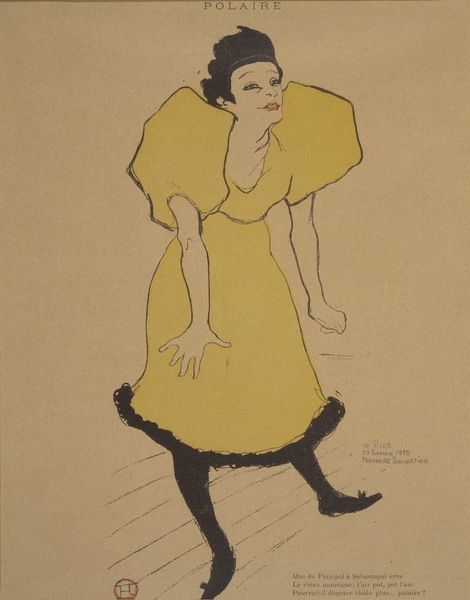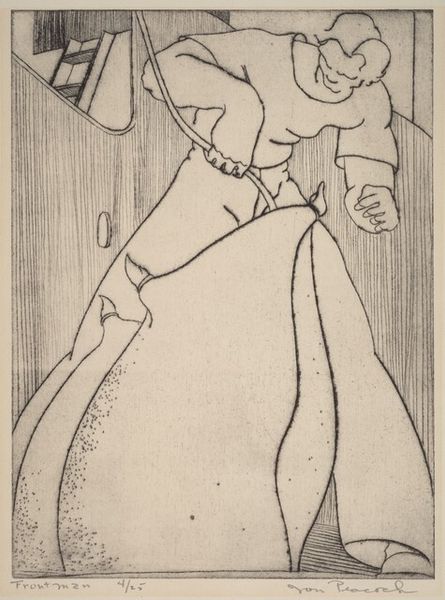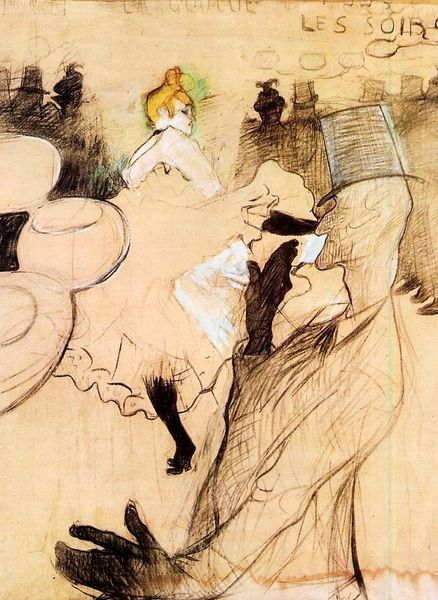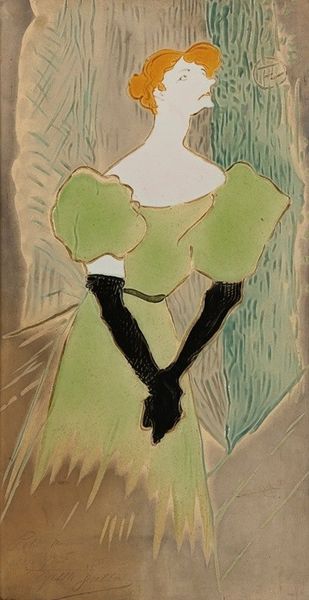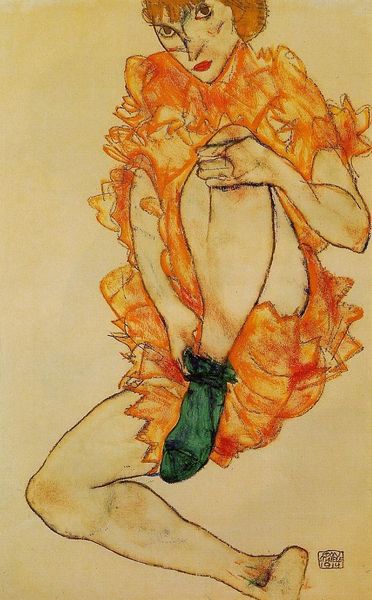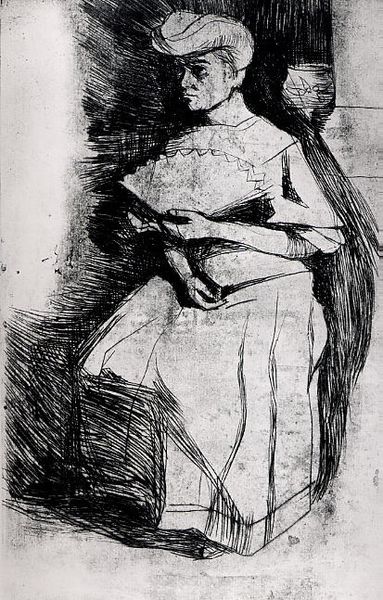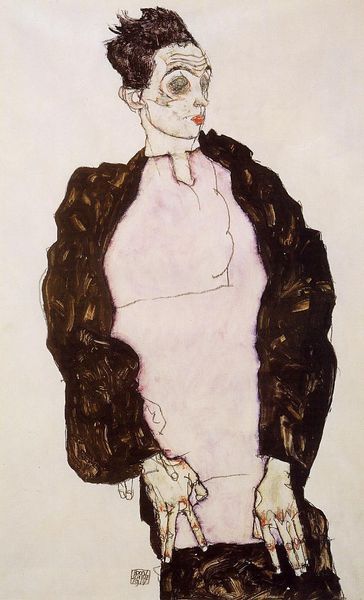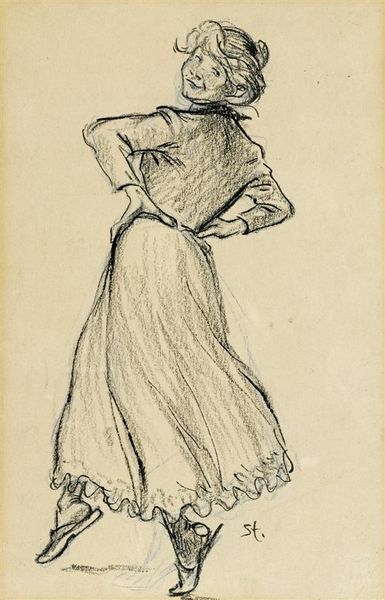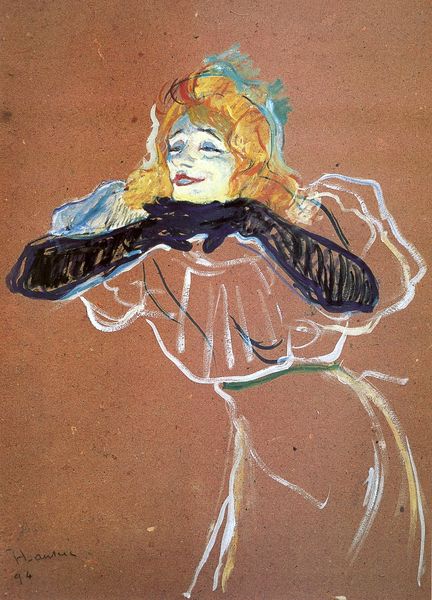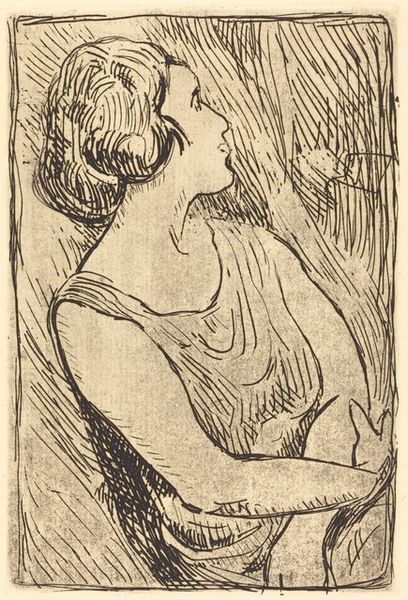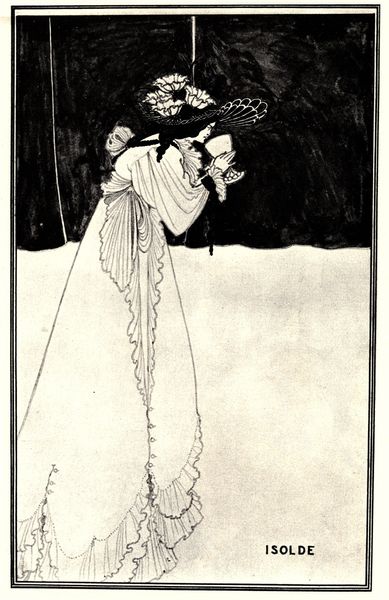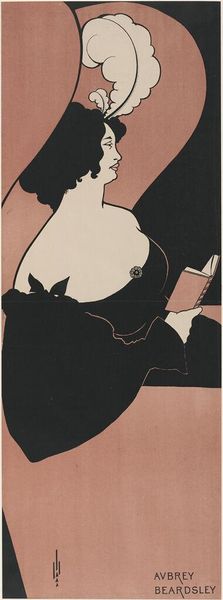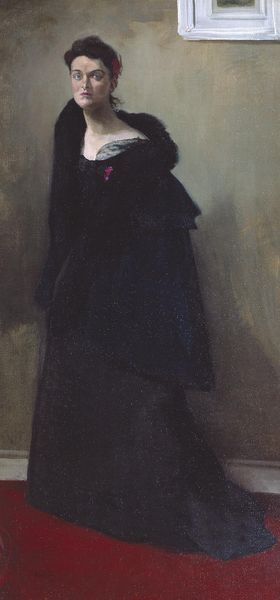
painting, watercolor
#
portrait
#
art-nouveau
#
painting
#
watercolor
#
symbolism
#
post-impressionism
Dimensions: 51 x 28 cm
Copyright: Public domain
Editor: Here we have Toulouse-Lautrec’s "Yvette Guilbert," created in 1895 using watercolor. The stark yellow and angular composition give it a striking, almost unsettling feeling. How do you interpret this work, particularly focusing on his choices in material and technique? Curator: I am drawn to the raw quality of Toulouse-Lautrec's materials. The watercolor, thinly applied, almost feels like a hurried sketch, yet it captures Guilbert’s presence with a startling immediacy. What interests me most is how his choice of watercolor as a "quick" medium allowed him to engage directly with the burgeoning entertainment industry of Montmartre and its impact on late 19th-century Parisian society. Think about the process: watercolor was more easily portable, aligning with the frenetic pace of modern life. What statement do you think Toulouse-Lautrec was making by immortalizing a popular singer through this seemingly ephemeral medium? Editor: That's an interesting point. I hadn’t thought about the connection between the materials and the speed of modern life. Maybe he’s commenting on how fame can be fleeting, even as he memorializes her? Curator: Precisely! It's not just a portrait; it’s an engagement with the celebrity culture emerging in response to mass audiences and industrial modes of artistic production such as lithography. We also need to acknowledge his disability, that significantly informed his viewpoint. His intimate knowledge of materials made it so he could harness them for more emotive representation. Editor: So, by using a quicker, cheaper medium, he's both elevating Guilbert's status as a performer and also maybe commenting on the changing landscape of art and entertainment and her place in society, and, therefore, capturing this tension by emphasizing how his art responded to, and even took part in, the societal transformation during that era? Curator: Exactly. And how does the stark contrast between the thin color wash and her thick dark gloves add layers to this transformation of artistic convention, challenging those distinctions through his medium? Editor: It makes me consider how the rapid change in materials mirrors and represents society at the time, allowing for different and possibly more interesting readings into the image, while at the same time pushing our definition of art and representation into different dimensions. Curator: I concur completely; art, like society, continues its never-ending material evolution.
Comments
No comments
Be the first to comment and join the conversation on the ultimate creative platform.
